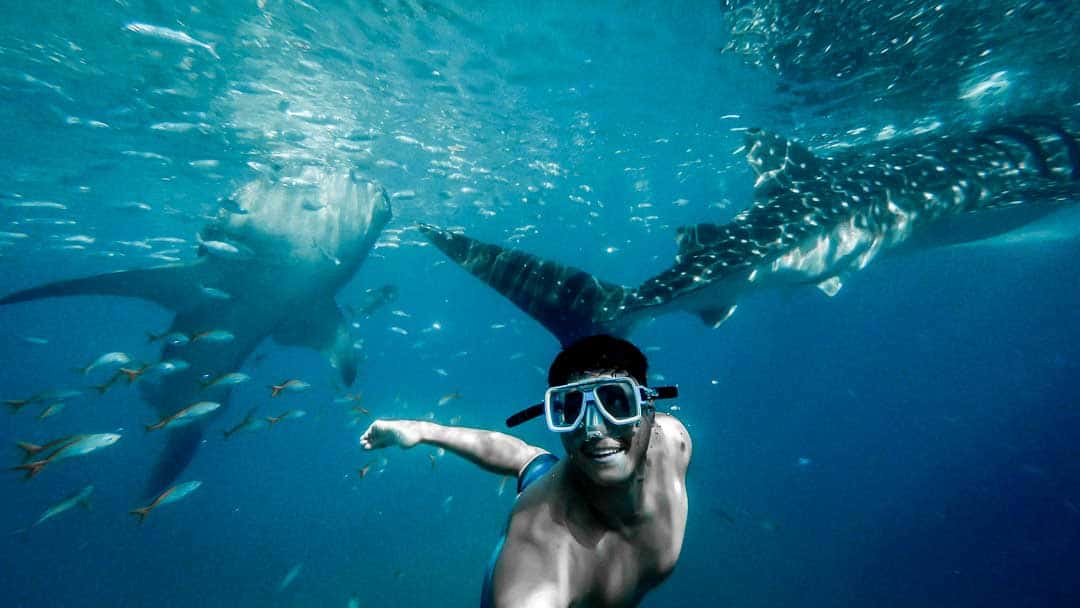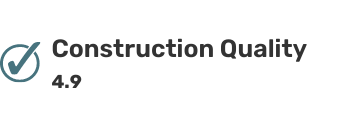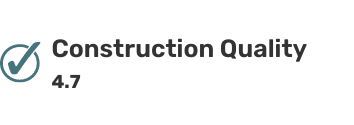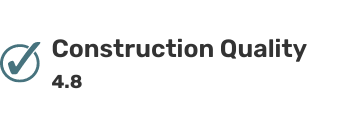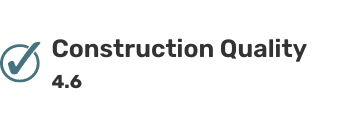Sinking and staying under water for extended periods of time can be scary, especially when you don’t know the area well. Thus, if you are planning to go snorkeling in an unfamiliar pond or a lake, then it would be best if you buy a floatation belt for snorkeling beforehand.
Vendors nowadays have come up with different kinds of floatation belts for snorkeling that caters to different needs. Some may not even call them floatation belts, but they are usually life vests that can keep users above water while they swim.
A floatation belt will make your underwater adventure safer and more comfortable so let’s check out these best floatation belt for snorkeling in our review below!
ALL THE FLOATATION BELT FOR SNORKELING THAT WE TESTED
AQUA FITNESS Floatation Belt for Snorkeling
General Impression
AQUA FITNESS is one of the top-rated floatation belts for snorkeling and comes in a range of colors, has an ergonomic design so it won’t chafe, pinch, or push you forward. It’s ideal for snorkelers who aren’t confident swimmers and is available in two sizes that fit most adults. It has a replaceable strap that can also be expanded for more natural breathing. This belt is ideal for those who enjoy swimming or snorkeling.
Specifications
BRAND: Aqua Fitness
SIZES: Small; 26-36in/66-91cm, Med/Large; 32-50in/81-127cm
MATERIALS: Soft foam, PVC
SUITABLE FOR: Snorkeling, water aerobics
PROS
- Ergonomic design
- Hygienic
- Secure fastenings
CONS
- Sizing issues
YOUSHE EVA Floatation Belt for Snorkeling
General Impression
The Youshe EVA swimming belt has an ergonomically tapered design that wraps securely around your lower back, and clips in place with a robust plastic buckle. It’s sizing means it will fit most adults and comes with a fully adjustable strap that can be tightened/loosened as needed. It’s great for those learning to swim, or who want additional support in the water.
Specifications
BRAND: Youshe
SIZES: 25 to 47 inches
MATERIALS: EVA foam, PVC
SUITABLE: Snorkeling, water aerobics, handicapped swimming
PROS
- Tapered back design
- Affordable
- Replaceable strap
- High-quality smooth foam
CONS
- Limited colour options
TYR Aquatic Floatation Belt for Snorkeling
General Impression
The TYR Aquatic Floatation Belt is perfect for water users who need support while floating, whether snorkeling, aerobics, or general swimming fitness. It’s made with 3.5″ high EVA foam blocks, has a robust adjustable belt and secure plastic clip system that will fit most body sizes and shapes. It is suited to many water sports, and levels of swimming proficiency.
Specifications
BRAND: TYR
SIZES: up to 52-inch waist
MATERIALS: EVA foam, PVC
SUITABLE FOR: Snorkeling, water aerobics, handicapped swimming
PROS
- Affordability
- Compact design
- Adjustable belt
- Multipurpose
CONS
- None
NASH Hydroslide Vinyl Dipped Floatation Belt for Snorkeling
General Impression
The Hydroslide Nash is a fantastic multi-sport floatation belt. Being safe and supportive in the water when you’re learning to swim, or even water-ski is paramount. The Nash is made from vinyl-coated EVA foam, comes with an adjustable belt, and in bright yellow, so you’ll always be seen! It’s long-lasting, easy to store, and a premium quality buoyancy belt. It’s easy to see why this belt is considered to be the best floatation belt for snorkeling.
Specifications
BRAND: Hydroslide
SIZES: Small; 25-30in, Med; 31-36in, Lrg: 37-42in, X-Lrg; 43-48in
MATERIALS: EVA foam with a vinyl coating, PVC
SUITABLE FOR: Snorkeling, water aerobics, handicapped swimming, waterskiing
PROS
- One-strap belt
- EVA foam construction
- Multi-sport application
CONS
- Limited colour options
TRC RECREATION Floatation Belt for Snorkeling
General Impression
Unlike other buoyancy belts, the TRC RECREATION comes with a fixed belt length, so the fastenings won’t slip and chafe against you. This vinyl-coated foam belt is ideal for water-fitness routines, snorkeling, or other water-sports. By securing around your lower back it supports your body in the water, providing swimmers with support while not inhibiting movement.
Specifications
BRAND: TRC Recreation
SIZES: Small/Med; 26-34in, Lrg/XLrg 34-44in
MATERIALS: Vinyl-coated foam, PVC
SUITABLE FOR: Snorkeling, water aerobics
PROS
- Fully replaceable cutting blade
- Spring-loaded handle mechanism
- Convenient lanyard attachment
- Compression-resistant
- Anti-corrosive construction
CONS
- None
AQUAJOGGER Pro Plus Floatation Belt for Snorkeling
General Impression
The AquaJogger Pro Plus is the most buoyant belt for snorkelers and swimmers alike. It offers wearers a durable and flexible fit that is easy to secure with a woven elastic belt, and releases without hassle thanks to a quick-release buckle. The patented contoured design aids in toning muscles and strengthens the lower back, so you can get fit and enjoy snorkeling at the same time!
Specifications
BRAND: AquaJogger
SIZES: up to 48in
MATERIALS: closed-cell foam, PVC
SUITABLE FOR: e.g. Snorkeling, water aerobics, handicapped swimming
PROS
- Vertical suspension
- Durable quality construction
- Adjustable belt
CONS
- Limited colour options
BEST FLOATATION BELTS FOR SNORKELING
Buyer's Guide
It’s hard to know what is the best floatation belt for snorkeling. With a wide variety of brands, sizes, design, and materials it’s difficult to decide which snorkel floatation belt will suit you and your needs. Let’s start with the materials used in your floatation belt; it’s what gives your snorkeling belt its lift.
Materials
Most snorkel flotation devices will be made from some sort of foam. This might be EVA or described as ‘closed-cell’, and could be dipped in vinyl. What does that mean for your buoyancy belt?
Well, your snorkel belt gets its lift from the density of the foam, or rather from the air that is trapped within it. Less dense objects float in water, so when air is forced into the foam during manufacturing, it cannot then escape, and this gives the foam its buoyancy.
Meanwhile, snorkeling belts with a vinyl coating are less likely to stick to your skin, which could cause a nasty rash or painful sensation when removing them. So, look for a belt that will be comfortable against your bare skin, or if you’re wearing an exposure suit will stay in place. iDiveBlue has a great article here on wetsuits for women.
Design
There are at least 3 common styles of floatation belts for adults. The simplest design is a series of foam blocks that are held together with a belt. The next is a long rectangular shape with a belt fastening; water-skiers commonly wear this style, so yes you can wear a ski belt for snorkeling. The third is a molded form that securely hugs your lower back while supporting your chest. This belt tends to be the best design for larger individuals needing a flotation belt for snorkeling.
Size
How far out of the water do you need to be? That can be a tricky question, as it differs between individuals. If you’re doing water aerobics, you’ll want a more vertical lift. However, when it comes to floatation devices for snorkeling, you don’t want to be walking on water.
Look for a snorkeling float belt that will keep you in the water, but that prevents your midsection from fully immersing, this will allow you to keep your face in the water but not have that sinking feeling.
One suggestion would be to look at a snorkel float belt that has removable or adjustable sections of foam, so you can add or remove buoyancy to suit you personally. Ladies will also have specific needs when it comes to buoyancy as they generally float easier than men. Then when it comes to choosing the right snorkel, check out the iDiveBlue feature on the best snorkels for this year.
Brand
This is one area that you’ll have limited choices. There are lots of manufacturers out there, but we’d suggest you stick to more reputable brands that specialize in snorkeling floatation belts and devices. They’ll offer better service, a manufacturer’s warranty, and a wider range of options.
Suitability
A snorkeling floatation device isn’t restricted to just snorkeling. You can use a belt floatation device for many other sports, like water skiing, water aerobics, water running, and developing your swimming strength.
BEST FLOATATION BELTS FOR SNORKELING
FAQs
1. Can you snorkel without knowing how to swim?
Yes, there’s no reason why you can’t get into snorkeling and swimming before being fully competent. It’s not recommended to go in deep water, as it does increase the risk, but you can most certainly go snorkeling in shallower water without being an Olympic swimmer. It’s also a great idea to keep swimming once you start, as the more you do, the better you’ll become.
2. What is a snorkeling belt called?
A float belt for snorkeling can be called many names. You’ll see them listed as buoyancy belts, fitness belts, floatation belt for snorkeling, floatation device, buoyancy device, snorkeling belts, and the list goes on.
One thing to bear in mind is that that a buoyancy belt/floatation belt for snorkeling is not always a personal floatation device. A PFD is a specialist piece of equipment designed for life preservation in an emergency situation, like a ferry or boat sinking. A buoyancy belt should never be used in place of a PFD.
3. What is a floatation belt?
Most floatation belt for snorkeling are manufactured from some sort of foam, usually a closed-cell or Ethylene-vinyl acetate foam, or as it’s better known as EVA. This is shaped into individual blocks, a long and thin rectangular shape, or even in a molded design that conforms to the contours of your back.
These foam belts float due to being lighter in density than water. This happens as air is trapped in the foam while it is being molded, and once set the foam forms a semi-rigid enclosure that keeps the air inside.
Some of these floatation belt for snorkeling will have a vinyl coating, this is designed for belts that will be secured on to bare skin, so they do not stick or pull on the skin, which can cause irritation or discomfort. Belts without this coating are better suited to swimmers wearing exposure suits/swimsuits.
4. How to use a float belt
Floatation belt for snorkeling are easy to wear. Most will attach simply with a quick-release buckle at the front, and wrap around your waist and over your lower back. You would normally put a floatation belt on before entering the water, and most certainly before you put on a mask and snorkel.
If you’d like more of a visual guide to putting on a floatation belt for snorkeling or some general information on them, we’d recommend this video by The Snorkel Store.
5. What is the difference between a snorkeling and a swimming floatation belt?
Whilst both types of floatation belts are used in water, the effect they have is substantially different. A Swimming belt is designed to increase swimmer’s strength, endurance, and overall performance. It’s like a giant elastic band that adds additional resistance to a swimmer’s body. As they pull themselves forward with each stroke, the swimming belt pulls them back.
A floatation belt for snorkeling, however, is designed to keep you afloat, to provide as much resistance to sinking as possible, but not restrict movement in any way. It can be used by snorkelers, those with mobility issues for in-pool fitness programs, water aerobics or running, and also most commonly with water skiers.
Both of these belts should not be confused with a scuba diving or freediving belt, as divers rely on a degree of negative buoyancy to remain in neutrally buoyant whilst underwater. This belt is usually a tightly woven nylon with lead weights threaded on to it.
6. How to keep a floatation belt in place
Floatation belt for snorkeling are usually kept in place by securing them firmly with the attached belt. This is a standard feature across many brands and is traditionally a woven nylon material that is secured with a PVC quick-release buckle.
During snorkeling, you may find that your floatation belt begins to move, it can slide up towards your chest, or down over your hips. This usually occurs as your body’s shape changes due to the water supporting your weight, and more supple body parts relaxing. If this happens, do not panic, simply slide the belt back into place and tug on the belt to tighten. Easy!
7. Where to buy floatation belt for snorkeling
You can purchase a floatation belt for snorkeling from any number of retailers, or manufacturers, and even online. We’d recommend you visit as many stores as possible to find the best fit for your body shape and snorkeling needs, but do have a look online as well as you can find great deals.
Within this article, we’ve supplied links to our preferred floatation belt for snorkeling, and we’ve listed why we think you’ll find them suitable for snorkeling and other water sports. Best of all, these floatation belt for snorkeling are available online and will be delivered to your door, meaning you’ll be in the water and exploring before you know it!
If you’re looking for more information on Snorkeling, Freediving, or Scuba Diving, don’t forget to check out the iDiveBlue feature articles. Keep diving blue!
REACH OUT
As always, we create our content with you, fellow adventurers, in mind. So, how’d we do? Did you find this informative? Did it help you make a decision? Did we miss anything? We’d love to hear from you below. Thanks for reading and we hope your next adventure is a great one!


